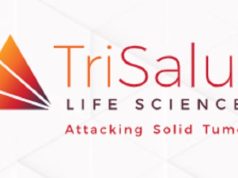
A proof-of-concept study has demonstrated the feasibility of using computed tomography (CT) with a novel composition of radiopaque microspheres in Yttrium-90 (Y-90) radioembolization to determine tumour radiation dose exposure. Presenting these early results at Spectrum (18–21 January, Miami, USA), Robert Abraham (Dalhousie University QEII Health Sciences, Halifax, Canada), told delegates that this technique “may provide increased confidence in the true spatial distribution of the microspheres, and hence the distribution of Y-90 activity in tumour”.
Outlining his hopes for Y-90 based CT radiopacity, Abraham said he thinks it “may improve characterisation of the absorbed dose heterogeneity in radioembolization”, and “may improve our understanding of the relationship between absorbed dose and tumour response, which could ultimately translate into improved patient outcomes.”
Using a proprietary blend of non-irradiated radiopaque Y-89 glass microspheres (30µm in diameter), Abraham described how the investigators injected 480mg through a 0.021” Cook Cantata microcatheter into the segmental arteries in the left kidney of a hybrid farm pig. Following sacrifice, the kidney was explanted and imaged by conventional CT scan. Three-dimensional convolution of the activity distribution with a validated Y-90 dose point kernel was implemented to produce a high-resolution dose distribution.
“The dose distribution images in the axial plane using MATLAB software simulates the effect of increasing microsphere deposition,” Abraham stated, showing the Spectrum audience five axial CT images of the left kidney with increasing amounts of deposited microspheres. “As you can see, from left to right, as you increase the quantity of microspheres that are deposited in the tissue, the radiopacity increases accordingly”, he shared. Indeed, there is a linear relationship between CT Hounsfield Units (HU) and microsphere concentration per CT voxel, according to previously published work by ABK Biomedical.
Explaining the implications of this relationship between increased deposition and increased radiopacity, he continued: “Using the specific activity at the time of administration, we could potentially convert radiopacity threshold maps to dose threshold maps.” As increased deposition of microspheres correlates with an increased dose, Abraham described how it is possible to build a colour map depicting specific thresholds. “For example, here we used a threshold of 210Gy which some studies have suggested is a minimum target threshold in order to obtain tumour kill with glass Y-90. Based on radiopacity mapping and conversion to dose we may be able to confirm a minimum of 210Gy in the target tissue” he said, again showing a CT scan of the left kidney coloured according to dose.
Turning to future work, Abraham said: “We are doing ongoing studies on different compositions that have been developed. We will evaluate the potential of CT dosimetry with both cone beam CT, to allow intraprocedural dosimetry, as well as post-procedural conventional CT. We will also be commencing a hypervascular tumour model trial with activated Y-90 product. This will compare CT radiopacity-based dosimetry with time of flight PET [positron emission tomography] dosimetry.”
ABK Biomedical products are not approved for clinical use; the radiopaque microspheres are strictly investigational.
Abraham is a co-founder and shareholder of ABK Biomedical Inc., co-inventor of ABK’s proprietary investigational products, and serves as ABK’s Chief Medical Officer.










